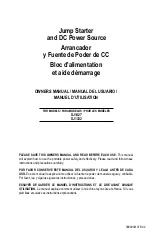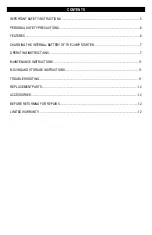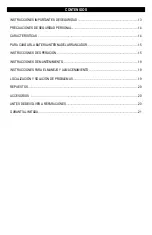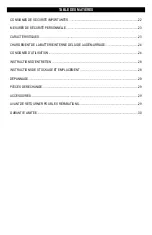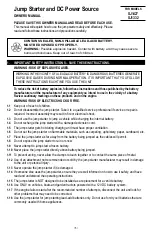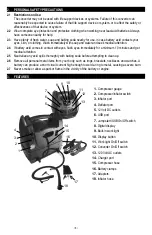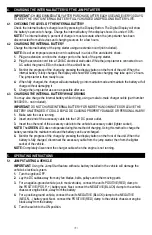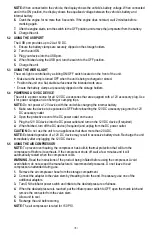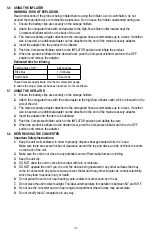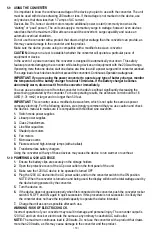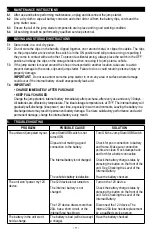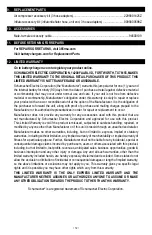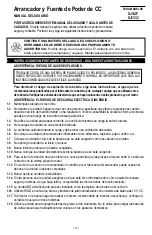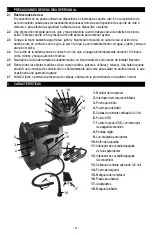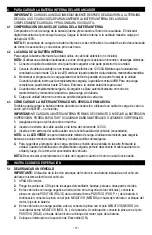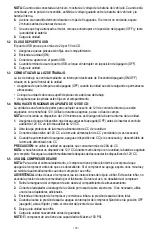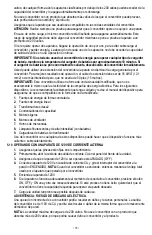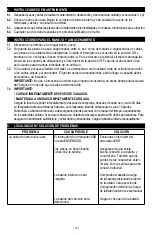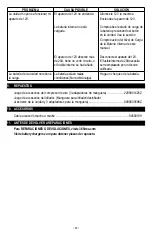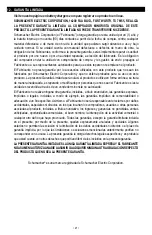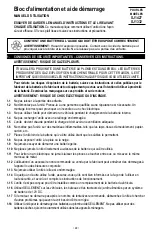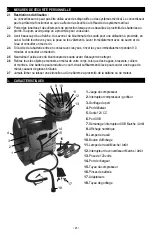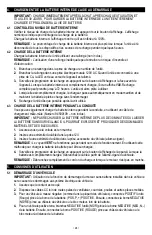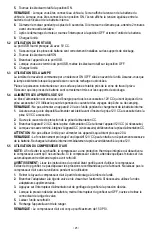
• 10 •
5.9
USING THE CONVERTER
It is important to know the continuous wattage of the device you plan to use with the converter. The unit
must be used with devices drawing 200 watts or less. If the wattage is not marked on the device, use
only devices that draw less than 1.7 amps of AC current.
Devices like TVs, fans or electric motors require additional power to start (commonly known as the
“starting” or “peak” power). The unit can supply a momentary surge in wattage; however even devices
rated less than the maximum 200 watts can exceed the converter’s surge capability and cause an
automatic overload shutdown.
Do not use the converter with a product that draws a higher wattage than the converter can provide, as
this may cause damage to the converter and the product.
Make sure the device you are using is compatible with a modified sine wave converter.
CAUTION: Always run a test to establish whether the converter will operate a particular piece of
equipment or device.
In the event of a power overload, the converter is designed to automatically shut down. This safety
feature prevents damaging the converter while testing devices and equipment with the 200-watt range.
If powering more than one device, start one device at a time to avoid a power surge and/or converter overload.
The surge load of each device should not exceed the converter’s Continuous Operation wattage rate.
IMPORTANT: If you are using the power converter to operate any type of battery charger, monitor
the temperature of the battery charger for about 10 minutes. If the battery charger becomes
abnormally warm, disconnect it from the converter immediately.
You can use an extension cord from the converter to the device without significantly decreasing the
power being generated by the converter. For best operating results, the extension cord should be 16
AWG (1.31 mm2) or larger and no longer than 50 feet.
IMPORTANT: This converter uses a modified sine waveform, which is not quite the same as power
company electricity. For the following devices, we strongly recommend that you use caution and check
the device’s manual to make sure it is compatible with modified sine waveform.
1. Switch mode power supplies
2. Linear power supplies
3. Class 2 transformers
4. Line filter capacitors
5. Shaded pole motors
6. Fan motors
7. Microwave ovens
8. Fluorescent and high-intensity lamps (with a ballast)
9. Transformerless battery chargers
Using the converter with any of these devices may cause the device to run warmer or overheat.
5.10
POWERING A 120V AC DEVICE
1. Ensure the battery clips are securely on the storage holders.
2. Open the protective cover of the AC power outlet on the front panel of the unit.
3. Make sure the 120V AC device to be operated is turned OFF.
4. Plug the 120V AC device into the AC power outlet, and turn the converter switch to the ON position.
NOTE: When the converter is turned on and being used, the display will show the total wattage used by
the device being powered by the converter.
5. Turn the device on.
6. If the device does not operate properly when first connected to the converter, push the converter rocker
switch ON, OFF, and ON again in quick succession. If this procedure is not successful, it is likely that
the converter does not have the required capacity to operate the device intended.
7. Charge the unit as soon as possible after each use.
WARNING: RISK OF ELECTRIC SHOCK.
Incorrect operation of your converter may result in damage and personal injury. The converter output is
120V AC and can shock or electrocute the same as any ordinary household AC wall outlet.
NOTE: The maximum continuous load is 200 watts. Do not use the converter with a product that draws
more than 200 watts, as this may cause damage to the converter and the product.

